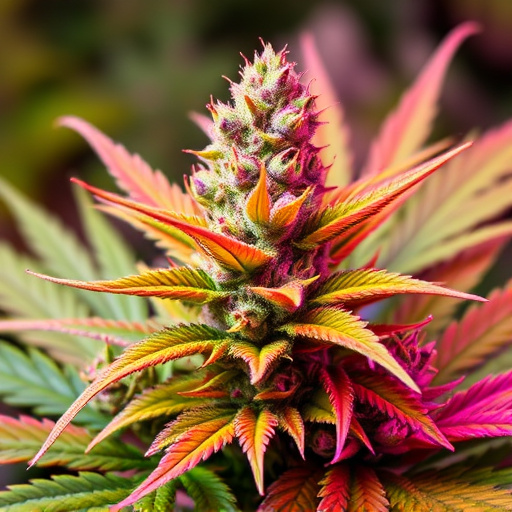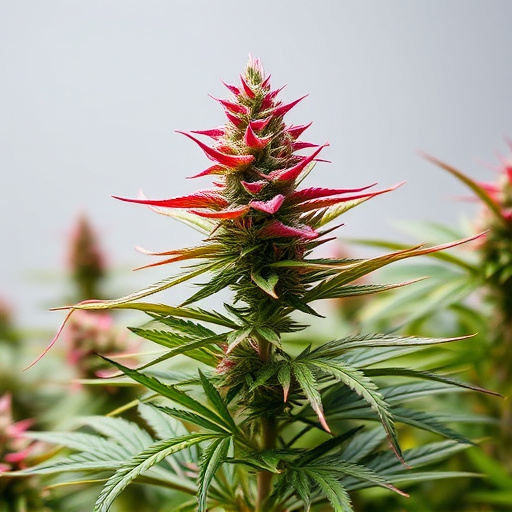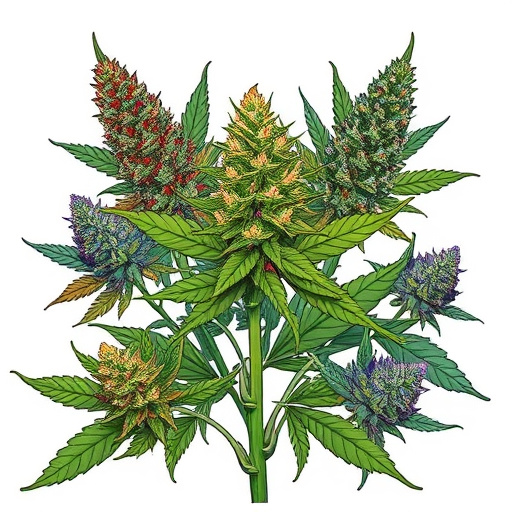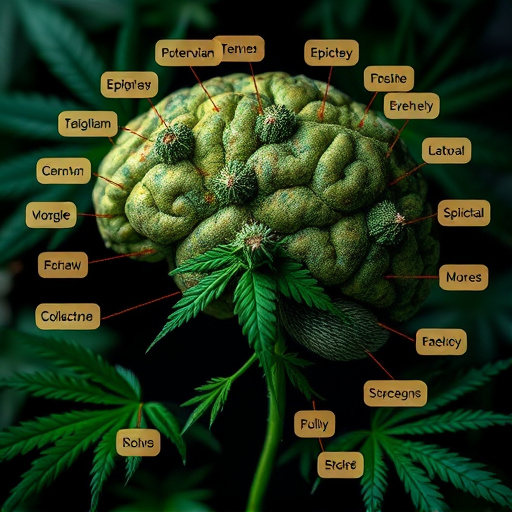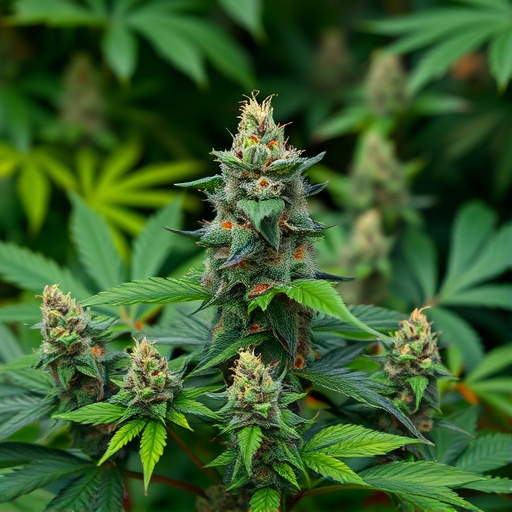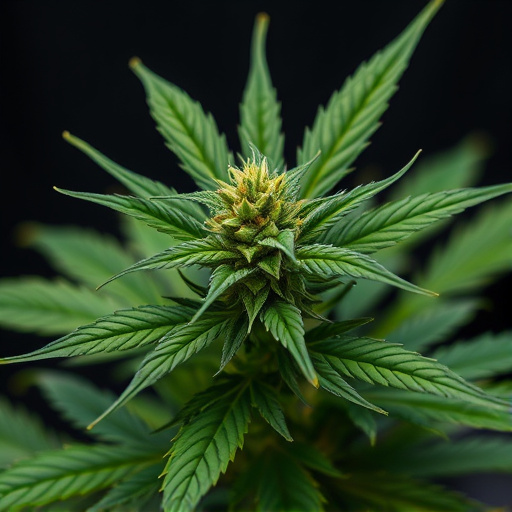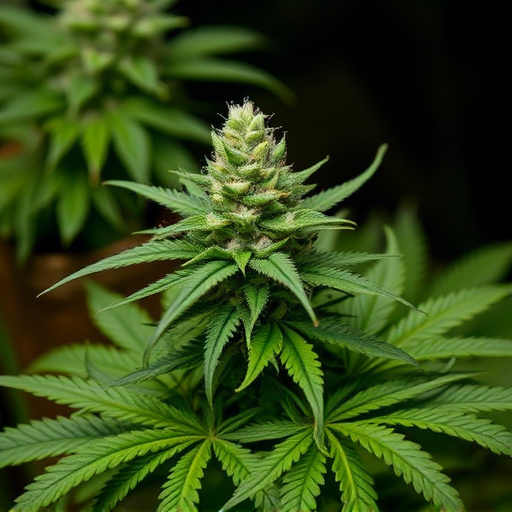Medical marijuana strains vary greatly in their chemical profiles, offering tailored solutions for diverse health conditions. Indica, sativa, and hybrid blends have distinct THC and CBD levels, with indica providing relaxing effects for pain and insomnia, sativa uplifting moods for depression and fatigue, and hybrids balancing relaxation and energy. Specific terpenes contribute to therapeutic benefits, allowing patients to customize treatments based on their needs. Selecting the optimal strain involves understanding these chemical nuances to ensure effective relief from conditions like anxiety, pain, seizures, and sleep disorders.
Unraveling the potential of medical marijuana strains is a crucial step in navigating modern healthcare. This comprehensive guide, ‘Understanding Medical Marijuana Strains’, offers a detailed exploration of how different varieties can alleviate various medical conditions. From anxiety and depression to chronic pain and epilepsy, we provide tailored strain recommendations for common ailments. Additionally, discover essential factors to consider when choosing the right medical marijuana strain, ensuring an informed and effective treatment journey.
- Understanding Medical Marijuana Strains: A Comprehensive Guide
- Common Medical Conditions and Their Suitable Strain Recommendations
- Factors to Consider When Choosing the Right Medical Marijuana Strain
Understanding Medical Marijuana Strains: A Comprehensive Guide

Medical marijuana strains are carefully cultivated and categorized based on their unique chemical profiles, primarily focused on the levels of THC (tetrahydrocannabinol) and CBD (cannabidiol). This classification is crucial as different ratios of these compounds can significantly impact patient experiences and the relief they seek for various medical conditions. For instance, high-CBD strains are often preferred for managing pain, anxiety, and seizures without inducing psychoactive effects, making them suitable for patients who need to maintain cognitive function.
On the other hand, indica strains, known for their relaxing and sedating properties, typically have higher THC content, which can be beneficial for conditions like insomnia, chronic pain, and muscle spasms. Sativa strains, with their uplifting and energizing effects, are often chosen for treating depression, fatigue, and certain types of pain. Understanding the nuances between these strains is a comprehensive guide to selecting the best medical marijuana strain for specific needs.
Common Medical Conditions and Their Suitable Strain Recommendations

Many medical conditions can be effectively managed with the help of specific medical marijuana strains. For instance, chronic pain sufferers often benefit from indica strains like Northern Lights or Purple Haze due to their high levels of CBD and relaxing effects. Anxiety and depression are other common issues that can be addressed through medical marijuana. Sativa strains such as Orange Crush or Jack Herer are recommended for these conditions as they tend to uplift mood and reduce tension.
Sleep disorders, including insomnia, often respond well to hybrid strains like Granddaddy Purple or Blue Dream. These strains offer a balance of indica and sativa properties, promoting relaxation without overwhelming sedation. Additionally, certain medical marijuana strains have been shown to help with seizures and epilepsy. For example, Charlotte’s Web is renowned for its high CBD content, which can mitigate seizure activity while minimizing psychoactive effects.
Factors to Consider When Choosing the Right Medical Marijuana Strain

When selecting a medical marijuana strain, several key factors come into play, ensuring patients find the most suitable option for their specific conditions and needs. Firstly, understanding the unique characteristics and chemical profiles of different strains is essential. Cannabidiol (CBD) and tetrahydrocannabinol (THC) levels vary widely, with CBD-rich strains offering potential therapeutic benefits without the psychoactive effects of THC. This distinction is vital for patients seeking relief from anxiety, pain, or inflammation without experiencing mental alterations.
Additionally, terpene content plays a significant role in strain selection. Terpenes are aromatic compounds that not only contribute to the distinct smell and taste of each strain but also possess their own therapeutic properties. For instance, myrcene is known for its relaxing effects, while limonene boosts mood and energy levels. Patients with specific conditions might benefit from strains high in certain terpenes, further customising their treatment approach.
When selecting the best medical marijuana strains, it’s crucial to consider both your specific condition and individual preferences. Understanding the unique properties of different strains, as outlined in this guide, will empower you to make an informed decision. Remember that what works for one person might not work for another, so it’s essential to research and consult with healthcare professionals to find the most suitable medical marijuana strain for your needs.
